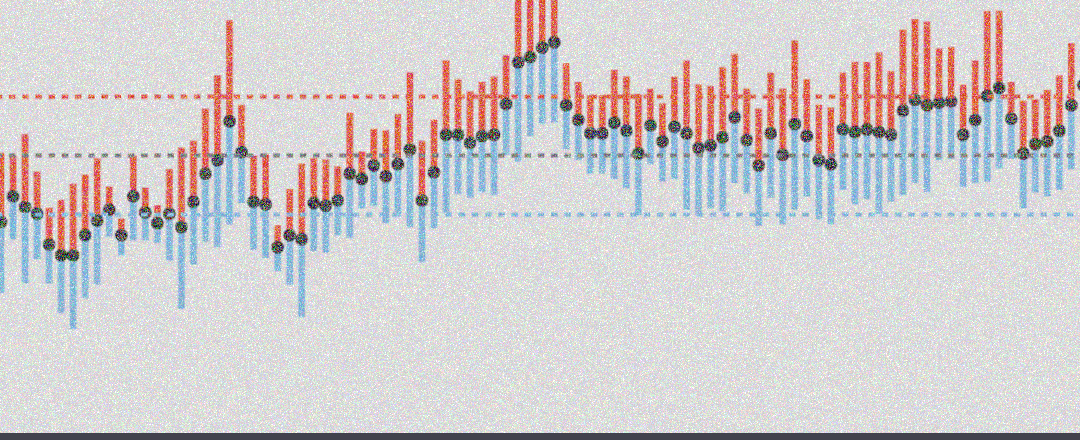(full disclosure: this article has affiliate links to books that I admire and highly recommend)
We all know that data is only tool, a resource, a means to an end, not an end in itself. It’s critical that, as analysts, we are able to not just assemble the data but also interpret responsibly it for our audiences. The best books I know for explaining how to do this effectively are Storytelling with Data: A Data Visualization Guide for Business Professionals by Cole Nussbaumer Knaflic, from the more technical data-visualization side, and Nancy Duarte’s DataStory: Explain Data and Inspire Action Through Story focusing on presentation structure.
We also all know that humans have strong biases and pattern-recognition abilities that can cause them to read a story in the data that may not actually be there. Or at least stretching the story beyond what is provided by the data. This is something we have to remain vigilant against. It’s one of the reasons The Scout Mindset: Why Some People See Things Clearly and Others Don’t is such a powerful book.
Take, for example, a recent article about the cryptocurrency Cardano. The key takeaway was summed up concisely in the title, “If You Day-Trade Cardano, It’s Best to Buy on Thursday”, and the article presents data supporting this recommendation. All of which is potentially valuable information.
Before even getting to the data, though, there are some sharp turns into more speculative territory that are not supported by data and don’t appear to stand-up well to logic. The author notes the well-known tendency for Bitcoin price to be more volatile on weekends than weekdays, which can create weekend buying opportunities, at least for short-term gains. This is put down to an Investing.com explanation that lower trading volume on weekends leads to trades of ‘weekday’ size moving prices more on the weekend. Ok, makes sense and verifiable with data.
It is the next step – more of a leap, really – that goes too far: the author quotes the Investing.com article’s claim that weekend price volatility is accentuated by the fact that banks are closed on the weekend.
“Banks are closed over the weekend and so investors are unable to add more money into their accounts….They are trapped if the price falls over the weekend and…unable to make a profit if prices surge…”
– Investing.com
Say what, now? Even though I’m not the most sophisticated person when it comes to finance, it has a been a very long time since I visited a bank any day of the week for anything other than a cash machine. So I somehow doubt that people who are actively participating in the world of DEFI – which has at its core purpose the disruption of traditional financial institutions – are somehow held back from trading crypto and ‘trapped’ by reliance on physical bank branches.
Side note: it’s not just me – the comments on the Investing.com article highlight the ridiculousness of this theory.
The Cardano article goes on to make the case that there are “different trading behaviours between Bitcoin and up-and-coming altcoins” which is laid out convincingly with data. Again, though, we leap beyond what is in the data.
These data-based insights are combined with the questionable “banks are closed on weekends” theory to somehow make Cardano the “people’s cryptocurrency” and leads to the declaration that “Cardano is a ‘Blue-Collar’ Crypto”.
“It’s the regular folks, those with nine-to-five job, that are buying ADA.” (Cardano coin)
– If you Day-Trade Cardano, It’s Best to Buy on Thursday
Well, maybe. But how would the author know that? How can we get there from the data? What other evidence supports this?
Further down, the author admits ‘it is not entirely clear‘ what causes the price patterns observed in the data and that his proposed explanation is an ‘opinion‘. Fair enough, but that is well after the theories are rolled out with an air of certainty that is just not there.
And the thing is: so what? What difference does it make? The data shows that there is, at least for now, a probabilistic ‘Thursday’ advantage to buying Cardano that we can profit from. Why do we need to invent reasons why this is the case? The human need for causal relationships is powerful, indeed.
Stories can be effective for turning data into knowledge and turning that knowledge into action. But as analysts, I believe we need to be extra careful that those stories are supported by data. I work in an exceptionally creative organization, where there is no shortage of storytellers with theories and opinions about what is causing all manner of outcomes. It makes for a vibrant culture and thought-provoking discussion. The way I see it, the reason we are invited to the table as data analysts is to speak for the data, to weave it into stories that bring the data to life, but to resist the very human temptation to go beyond. It can be a fine line, but our credibility depends on it.
